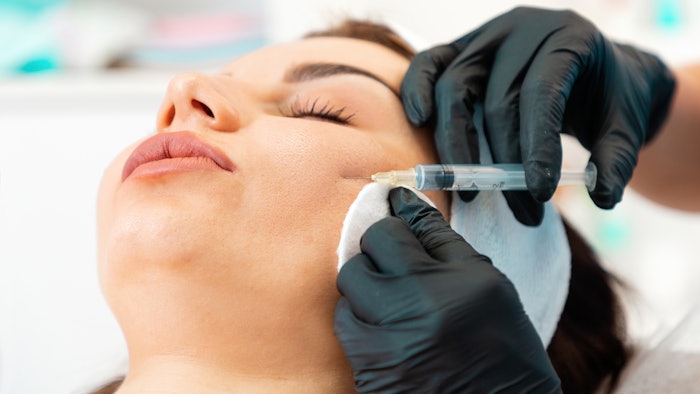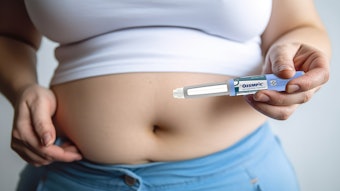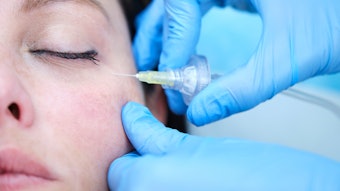
A study comparing two approaches to cheek volumization with hyaluronic acid-based fillers found that a transoral approach to injection is as safe and effective as a traditional percutaneous injection technique.
Related: Restylane Contour for Cheek Augmentation
For the single-center, comparative, prospective study, published in the Journal of Cosmetic Dermatology (October 12, 2021), Jesús Luis Oliva Hernández, MD, et al, enrolled 20 subjects (mean age 45.3 years). Subjects were randomized to receive filler injections to each side of their faces using either ultrasound-guided transoral injection or traditional percutaneous injections.
The investigators assessed outcomes using the Global Aesthetic Improvement Scale (GAIS) and procedure satisfaction survey. The degree of pain experienced was evaluated using a Visual Analog Scale (VAS) for pain. Subjects returned for follow-up after one year.
Related: Combination CaHA and HA Fillers for Midface and Jawline Enhancement
The researchers observed no significant differences in aesthetic improvement scores or in the satisfaction surveys. There were, however, significant differences in the transoral approach assessment at three months and in both procedures at six months between patients and evaluators. Regarding pain, 55% (n = 11/20) of subjects reported less pain with the transoral approach, and 15% (n = 3/20) did not perceive pain with either technique.
There were no unexpected side effects, and all adverse events resolved without the need for treatment.
Related: Variations of the Angular Artery in the Midface
Based on these findings, the authors concluded that, “The transoral approach for cheek volumization with hyaluronic acid was shown as a safe, effective technique that provides more comfort and minor sensation of pain than the traditional percutaneous approach but with equivalent aesthetic outcomes.”











